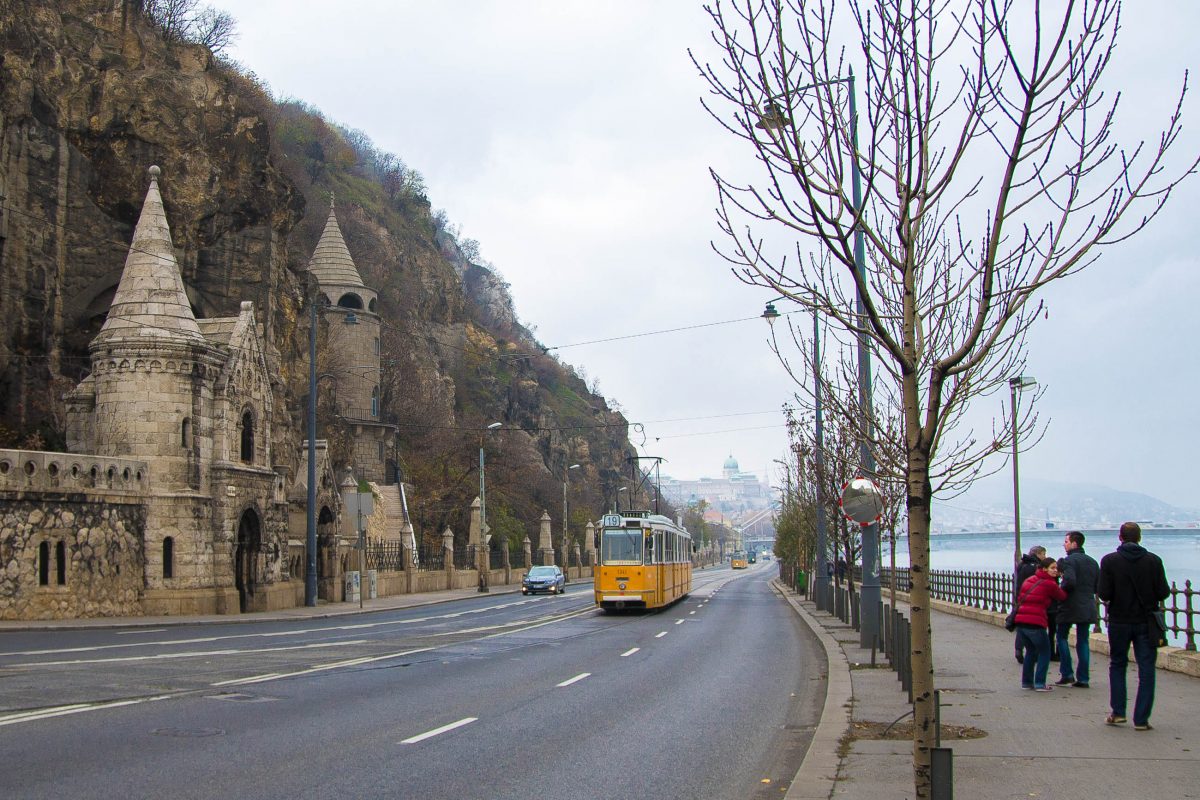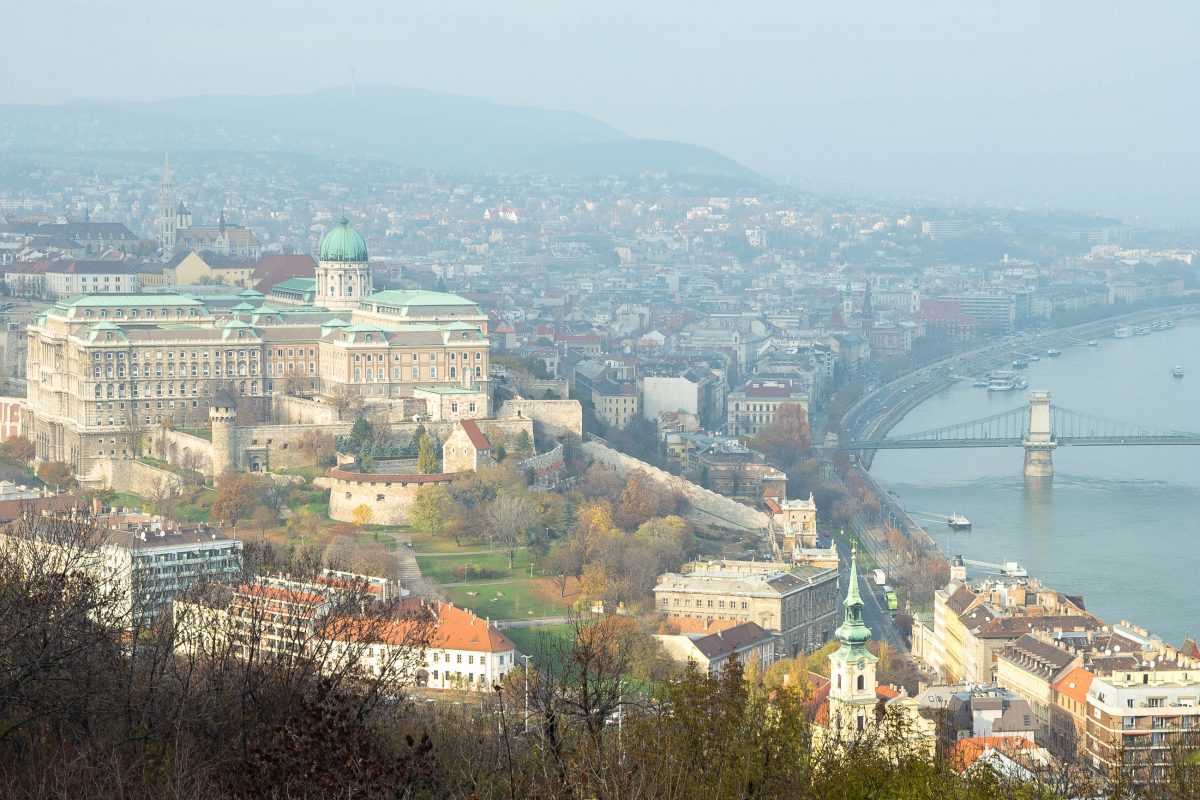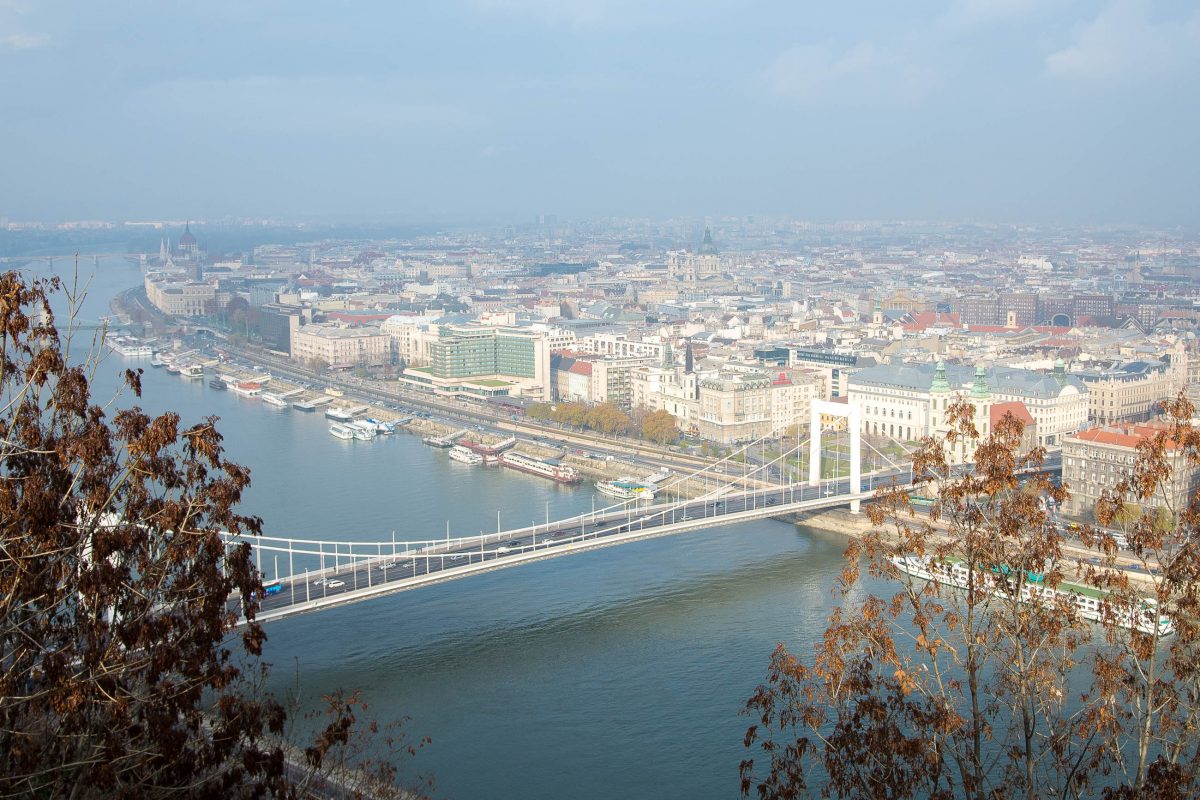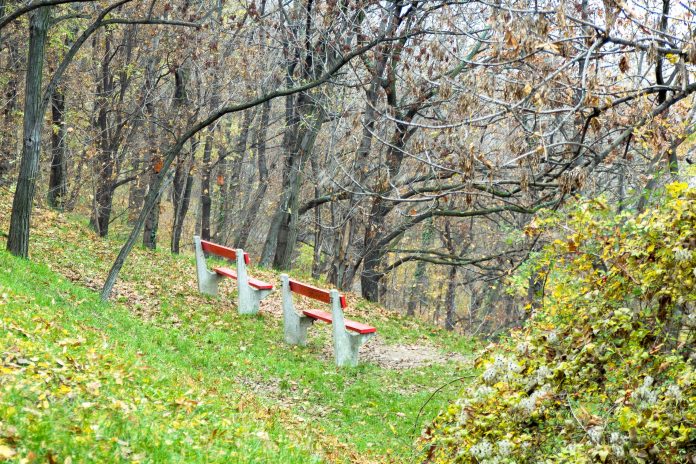Der Gellért-Berg im Herzen von Budapest lockt Besucher nicht nur mit seinen Pfaden durch lauschige Wälder, sondern hat auch einige äußerst interessante historische Sehenswürdigkeiten zu bieten.
Der Gellért-Berg im Stadtteil Buda am Ufer der Donau liegt gleich neben dem berühmten Burgberg und zählt zu den idyllischen Sehenswürdigkeiten von Budapest. Mit einer Höhe von 235 Metern bietet der Gellért-hegy zwischen der Elisabeth– und der Freiheitsbrücke entspannende Spazierwege und fantastische Ausblicke auf den nahe gelegenen Burgpalast, die Donau mit ihren Brücken und den Stadtteil Pest. Die wunderbar grüne Gegend gehört zu unseren Top 10 Sehenswürdigkeiten von Budapest.
Inhaltsverzeichnis
Gellért-Berg als Blocksberg
Zu Beginn des 18. Jahrhunderts war der Gellért-Berg auch unter dem Namen „Blocksberg“ als Treffpunkt von Hexen bekannt. Zu diesem Aberglauben dürften die Einwohner Budapests aufgrund der großen St. Iván-Höhle im Südosten des Gellért-Berges bekommen sein, da hier an seinen Flanken immer wieder Schwefeldämpfe aufgestiegen sind.
Felsenkloster am Gellért-Berg

Am Fuß des Südhangs in der Nähe der Freiheitsbrücke befindet sich ein Kloster des Pauliner-Ordens, das 1926 direkt in den Berg hineingehauen wurde. Das Kloster ist nach dem Vorbild der Kapelle von Lourdes entstanden und wurde in einer natürlichen Höhle gebaut, die in den 1930er-Jahren durch Sprengung vergrößert wurde. Der Eintritt ist frei und die Felsenkirche immer noch in Betrieb. Ein Besuch der unterirdischen Andachtsräume mit den grob behauenen Wänden lohnt sich auf jeden Fall!
Auf der anderen Seite der Freiheitsbrücke befindet sich das renommierte Hotel Gellért mit dem traditionellen Gellért-Bad, welches für seine heilende Wirkung bekannt ist. Vom nahe gelegenen Szent Gellért tér, dem Platz des Heiligen Gellért, kann man auch mit dem Bus bis auf die Spitze des Gellért-Berges fahren.
Sehenswürdigkeiten am Gellért-Berg

Der Gellért-Berg kann von mehreren Seiten aus über Treppen und Wege erklommen werden und ist mit einem Netz aus Spazierwegen überzogen, die zwischen dichten Wäldern und einladenden Bänken zu den verschiedensten Sehenswürdigkeiten führen. Je höher man steigt, desto fantastischer wird der Ausblick über Budapest.
Gellért-Denkmal
Der Gellért-Berg erhielt seinen Namen vom Märtyrer-Bischof Gellért, der einer Legende zufolge im 11. Jahrhundert von heidnischen Ungarn in einem Holzfass vom Gellért-Berg aus in die Donau geworfen wurde. Das Monument wurde nach eine Spende durch den deutschen Kaiser Wilhelm II. im Jahr 1904 fertiggestellt. Unterhalb des Denkmals entspringt eine natürliche Quelle, die in einem kleinen Wasserfall bis zu einem Brunnen am Ende der Elisabeth-Brücke fließt.
Freiheitsstatue

Tatsächlich, auch Budapest besitzt eine Freiheitsstatue! Sie wurde im Jahr 1947 errichtet und erinnert an die gefallenen Soldaten der russischen Roten Armee, die Budapest 1945 eroberte und Ungarn von der deutschen Besatzung befreite. Das Freiheitsdenkmal ist von ganz Budapest aus sichtbar.
Zitadelle

Auf dem höchsten Punkte des Gellért-Berges thront eine Zitadelle, die einst zur Befestigung Budapests errichtet worden war. Noch heute kann man durch die altehrwürdigen Mauern spazieren und historische Geschütze bestaunen. Zahlreiche Ausstellungen sowohl über- als auch unterirdisch in den einstigen deutschen Bunkern berichten von den Kriegszeiten Ungarns. Jede Menge Souvenirstände und -Shops warten auf die Besucher, die vor allem den herrlichen Ausblick vom Gellért-Berg genießen möchten.
Der Blick ist tatsächlich atemberaubend und fällt nicht nur auf den nahe gelegenen Burgberg mit dem monumentalen Burgpalast, sondern über die Donau mit der Freiheits- und Elisabeth-Brücke und weit über den Stadtteil Pest, aus dessen Dächermeer die jeweils 96m hohen Kuppeln des Parlaments und der St. Stephans-Basilika ragen.





